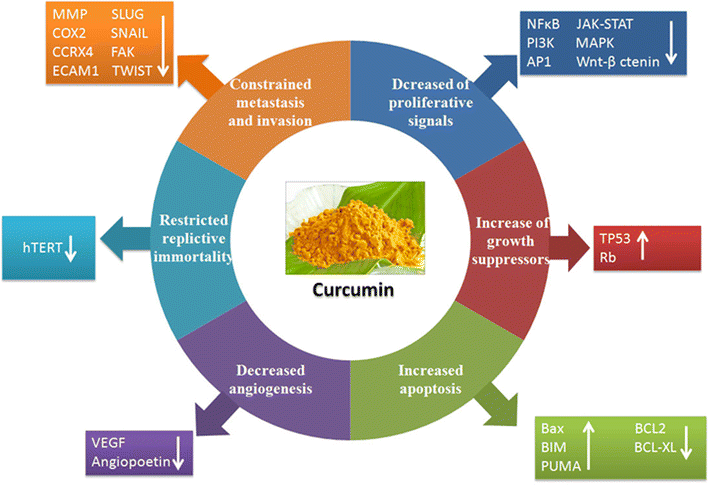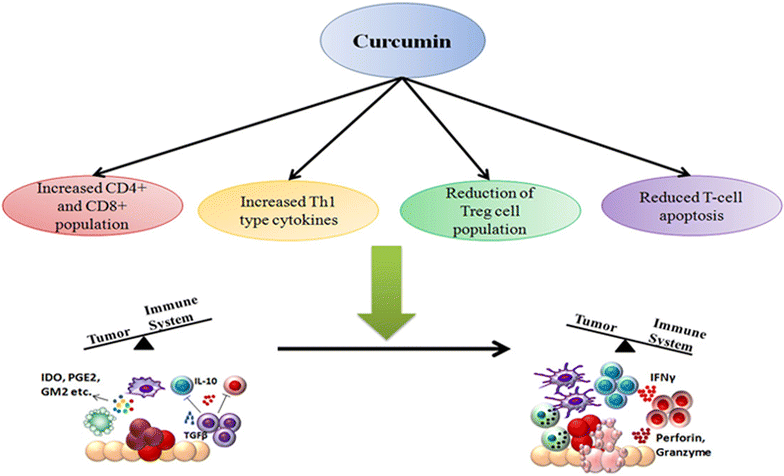Curcumin and tumor immune-editing: resurrecting the immune system
- PMID: 26464579
- PMCID: PMC4603973
- DOI: 10.1186/s13008-015-0012-z
Curcumin and tumor immune-editing: resurrecting the immune system
Abstract
Curcumin has long been known to posses medicinal properties and recent scientific studies have shown its efficacy in treating cancer. Curcumin is now considered to be a promising anti-cancer agent and studies continue on its molecular mechanism of action. Curcumin has been shown to act in a multi-faceted manner by targeting the classical hallmarks of cancer like sustained proliferation, evasion of apoptosis, sustained angiogenesis, insensitivity to growth inhibitors, tissue invasion and metastasis etc. However, one of the emerging hallmarks of cancer is the avoidance of immune system by tumors. Growing tumors adopt several strategies to escape immune surveillance and successfully develop in the body. In this review we highlight the recent studies that show that curcumin also targets this process and helps restore the immune activity against cancer. Curcumin mediates several processes like restoration of CD4(+)/CD8(+) T cell populations, reversal of type-2 cytokine bias, reduction of Treg cell population and suppression of T cell apoptosis; all these help to resurrect tumor immune surveillance that leads to tumor regression. Thus interaction of curcumin with the immune system is also an important feature of its multi-faceted modes of action against cancer. Finally, we also point out the drawbacks of and difficulties in curcumin administration and indicate the use of nano-formulations of curcumin for better therapeutic efficacy.
Keywords: 3-Es; Curcumin; Hallmarks of cancer; Nanocurcumin; Tumor immune-editing; Tumor immunesurveillance.
Figures




References
-
- Saha S, Adhikary A, Bhattacharyya P, Das T, Sa G. Death by design: where curcumin sensitizes drug-resistant tumours. Anticancer Res. 2012;32(7):2567–2584. - PubMed
Publication types
LinkOut - more resources
Full Text Sources
Other Literature Sources
Research Materials

